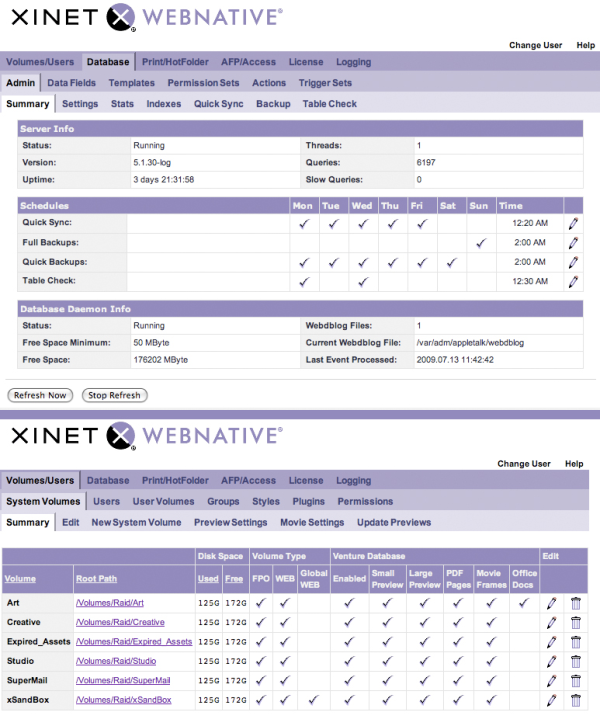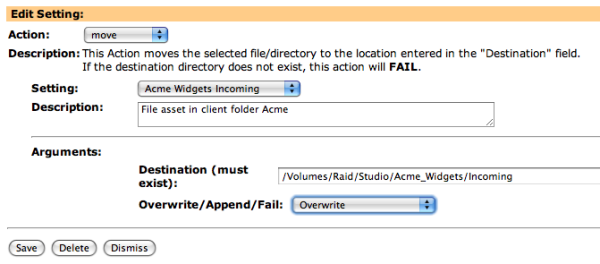Robert Sullivan
Recent Posts
I ride dirt bikes and recently incurred a 700 dollar repair bill on my sons bike.
What? What was the cause of this? It's a two stroke motocross and the engine had
seized up, which is not all that unusual, but we had done a new top-end not all that
long ago. So why had it blown again so early?
The 'real mechanic' I brought it to explained that pump gas has changed drastically
from what the engine was designed to run on. But the bike is only four years old..!
Pump gas these days is going Greener with at lease 10% ethanol or more, and is so
oxygenated that it burns hotter, expanding the rings tighter around the piston...
you get the idea. Ring-ding-a-ding, goes to bwop-bwooooop... silence.
As back yard mechanics working on dirt bike engines we hadn't done anything wrong with
our top-end. The gas we run had changed and we didn't ever realize the consequences.
I had an issue last week that drove home the importance of staying current
with system wide support. My customer was having difficulty with XMP metadata
that was not showing up in Venture. This was for XMP fields that were working
correctly not that long ago. Venture syncs were also not showing the field values
either. The first instinctive question is "what changed?" And the answer is
"we're not doing anything differently." Like me with my dirt bike.
Xinet engineering had me activate fpod vlog per a specific tech note which will
create a special output file. Copy on a questionable file again and watch for it to
show up in the log. Verify that the XMP data is not showing in the browser and then
run the syncxmp command in debug mode to capture what the sync is actually doing,
or having issues with. Verify if the data still doesn't show up and send the logs and
sample file in to them for analysis.
They came back with a new syncxmp binary file to slip in, and this was the resolution
to the problem.
I inquired with Xinet engineering about the 'why' and 'how' questions having to do with
the metadata not showing up in Venture. Xinet replied that from their perspective,
the issue had to do with a non-compatible file: specifically, the jpeg image that I
had sent, which caused syncxmp to fail with these errors:
syncxmp(87535) malloc: *** error for object 0x512060: Non-aligned pointer being freed (2)
syncxmp(87535) malloc: *** error for object 0x512390: double free
Now this error is gobbly-gouk to me. I would have thought a pointer being freed was
a good thing, but I'm not a code writing engineer for several reasons, which is why I
have a very defined escalation path.
The way they "fixed" this was to test my sample file against a newer build of syncxmp,
from the new Suite 16 code, which incorporates some newer XMP libraries provided by Adobe.
In short, the newer Adobe libraries resolved the issue.
So as far as my customer was concerned, they were "not doing anything differently"
But apparently Adobe was. The problem came from the fact that Adobe doesn't stand
still. Ever! They continue to evolve and improve their XMP libraries and those
changes were not recognized by the Xinet version my customer was running.
This is the intrinsic value of having support. We were able to update to a newer
binary to stay current with the ever changing world.
So even though you may not be doing anything different... Change Happens!
My dirt bike solution is to run race gas. The world keeps changing around us without our
consent or input and will not wait for us to adapt or catch up. The leading edge is really
not all that far ahead. But by falling behind, the distance becomes huge and costly.
So stay current with good support.
And if you ride dirt bikes, check your gas.
-Sully
1 Comment Click here to read/write comments
Xinet Suite-16 Has A Sweet Interface
Posted by
Robert Sullivan on Fri, Jul 17, 2009 @ 11:33 AM
Tags: GUI, Xinet, XMP Panels, NAPC
We've been working with Xinet's newest upcoming version release, Suite 16,
and I'm telling you, it is sweet! Aside from the video excitement that Brian talked
about, there are a lot of cool developments in Suite 16.
All of the administration tools from FullPress and WebNative Venture are all in one
web based GUI. The old Java GUI for FullPress will still be available in Suite 16,
but I don't think it will be developed beyond that. Once you get use to the new web
base admin, you'll toss that old interface like yesterdays newspaper anyway.
There are three control bars in the new interface and the top row has six control
categories. You can see in the two screen captures below that as I change the top
row category, the next two rows will change and give you access to all of the pertinent
settings for that selection. It's very well thought out were simple things like the
Volumes/User category also gives you the Venture Permission settings to assign.

As an administrator I think the "Logging" category is the big boom, no-brainer.
All of the logs that were scattered about before are now under one button. Xinet has
also added some more views to information that users are always asking about.
'Preview Generation' will now show you what is in the pipe line as far as how many files
are being processed. So if a user dumps 25 movie files and 71 images into the system,
you can see the numbers of what is processing, waiting or holding. Helping to take the
guess work out of, what is my system working on.
There's a nice feature for importing any existing custom XMP panels you may have also.
What was a manual process of adding one field at a time is now a batch in the interface.
If you have custom XMP panels within your Adobe programs you can now import them into
the Venture database very easily. Drop your panel in and select which data fields you'd
like in Venture, create it's own Data Field Set on the fly, and even determine which
fields you'd like to be XMP writable. Submit and it's done. All of those custom data
fields are now available to put into your data templates.
There's a lot more in here too. We'll be talking a lot about new features and I'm sure
NAPC will be holding a Webinar or two as the release date draws near. I think when you
see it, you'll agree with me, Xinet Suite 16, is pretty sweet!
-Sully
Some people actually prefer to work from the command line in a terminal window.
I know! Can Ya' believe it!
There are somethings that just aren't in the GUI and there are some things you
can just do faster in a terminal window. That is assuming you can type faster
than me.
I had a client call in looking for a way to create a series of "Move Actions"
but wanted to do it as a batch somehow. I couldn't get him a 'batch create' for a
WebNative Venture action, but... command line creation fit the bill.
The idea was for remote users to have an Uploader Application and one of the
mandatory data fields was the client name. The Trigger set would do a 'Compare Action'
and then call a Move to-client-name, within the folder structure. So it's going to be
an automated filing system with Triggers for uploaded assets.
In the folder path: /usr/etc/webnative/actions/
are all of the default Venture action categories, (copy, email, move...) and any
custom action categories we can create ourselves. Within each specific category folder
are the scripts for that action and a settings folder that has a config file for each
action we create.
Here is a sample move action called: "Acme Widgets Incoming"

If I look at that setting from the command line it looks like this:
# cat "Acme Widgets Incoming"
[base]
desc=File asset in client folder Acme
[arg0]
value=/Volumes/Raid/Studio/Acme_Widgets/Incoming
[arg1]
value=O
#
It's pretty simple once you compare the GUI to the code settings.
desc is the description of the action
arg0, value, is the destination path we want to move the asset into.
arg1, value=O, is the 'Overwrite' selection.
This value could be 'A' for 'Append Unique Number' or 'F' for Fail
You just need to understand the argument options and the code translation. Now obviously
the different action categories will have other argument options, you just need to review
each one to know the 'value' to assign.
So back to my client's need to create multiple actions quickly. Consistency in the folder
structure and nomenclature is part of the key. All we do is create one 'master' move action
in the WebNative browser window. "Acme Widgets Incoming"
From the command line copy the master to the next client name and then edit the value path.
Done.
In the terminal window navigate to the action settings folder.
cd /usr/etc/webnative/actions/move/settings
Copy paste the master setting to the new client name.
cp "Acme Widgets Incoming" "Spacely Sprockets Incoming"
Edit the new setting "Spacely Sprockets Incoming" for the correct path-to-folder.
value=/Volumes/Raid/Studio/Acme_Widgets/Incoming
becomes:
value=/Volumes/Raid/Studio/Spacely_Sprockets/Incoming
If you need to create a lot of actions that do the same thing to unique paths, this is the
quickest way to go. The command line is not for everybody but for those that know their way
around, its another powerful way to work with the Xinet Venture database. My client now has over
300 move actions, to file uploaded assets into the correct client folder automatically.
All done by lunch time..!
So what's for dessert?
-Sully
So here I go a blogging away. I'm not too sure of how to start because usually I'm following an agenda of some kind, or a question to start with. Someone has a problem or a challenging workflow to configure. Blogging is more free flowing, I guess... We'll see.
I do a lot of training for new clients and there is so much information to absorb that they can easily become overwhelmed & overloaded. As they get use to the system they'll Venture further (pun intended) and start looking for cleaner ways to use their new system. But not many will make that leap and really push the limits of what they can get out of it early on. There's way more power under the hood.
The problem I find so often is that people have an idea of what the server can do but aren't sure how to get there. And that stops them. At that point, the thing that most often drives them is a client request, or the boss (every one has a boss...) saw a Webinar about some cool widget and wants it created. Is it done yet?
When I was in Printing, I worked for a guy that always said,
"If I wanted it tomorrow, I'd be asking for it then. I want it now!"
Then the calls start coming in in earnest. Which is great for me because now I have something to dig into. A new challenge. But I wonder how do we get people to push the envelope before they get the push themselves? It's training, and it's knowledge. NAPC runs Webinars' all the time on different applications, from FullPress, the Venture database, to Dalim Dialogue or the Xinet Uploader. Sharing the knowledge is driving the train here!
Do you have an idea for a Webinar you'd like to see. Tell us. Got an idea for any Trigger automations, let me know. If you can conceive of it, we can build it... well, I'm looking for the stuff we can build out-of-the-box. Custom stuff comes later.
-Sully